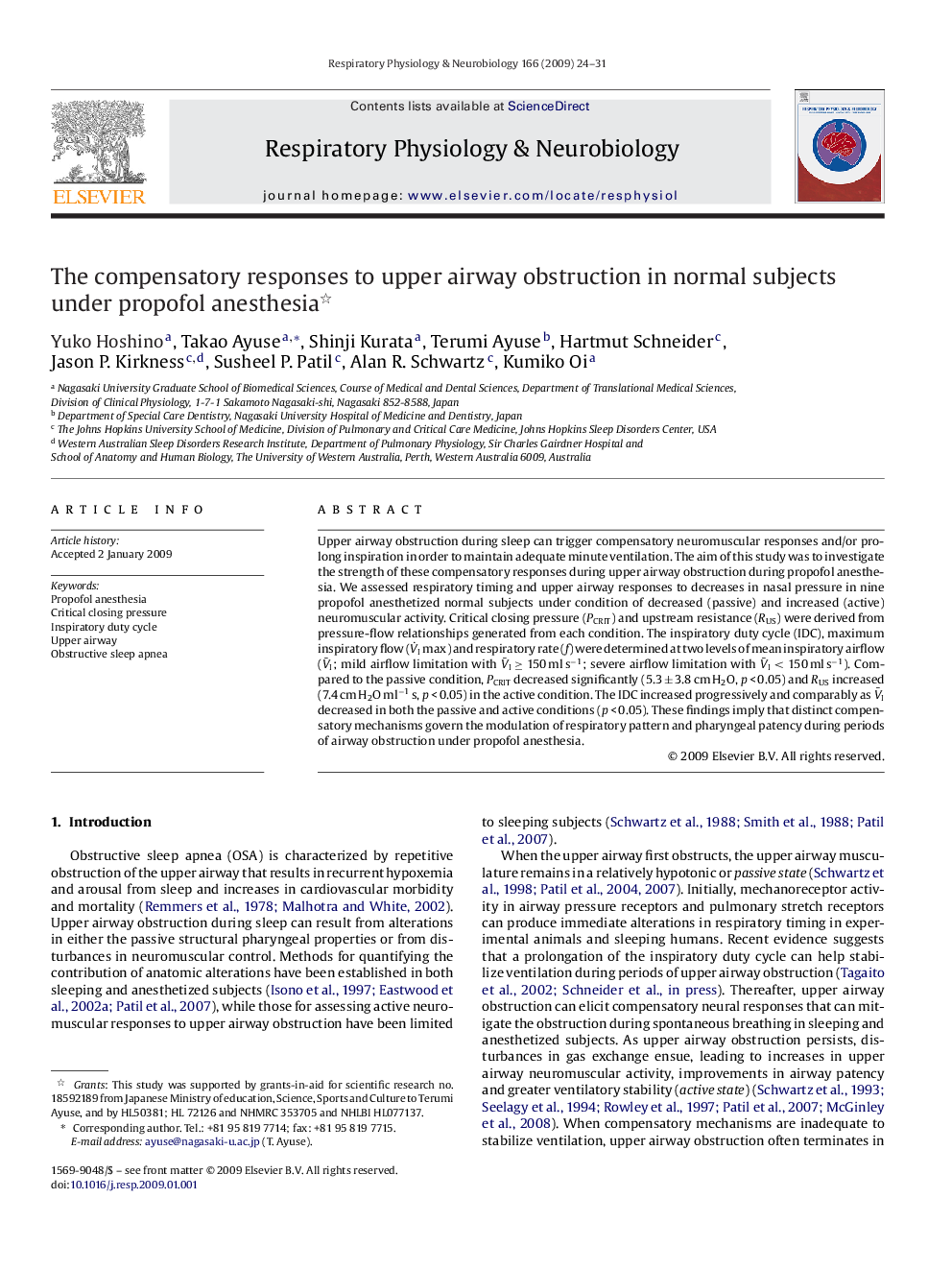| Article ID | Journal | Published Year | Pages | File Type |
|---|---|---|---|---|
| 2847842 | Respiratory Physiology & Neurobiology | 2009 | 8 Pages |
Upper airway obstruction during sleep can trigger compensatory neuromuscular responses and/or prolong inspiration in order to maintain adequate minute ventilation. The aim of this study was to investigate the strength of these compensatory responses during upper airway obstruction during propofol anesthesia. We assessed respiratory timing and upper airway responses to decreases in nasal pressure in nine propofol anesthetized normal subjects under condition of decreased (passive) and increased (active) neuromuscular activity. Critical closing pressure (PCRIT) and upstream resistance (RUS) were derived from pressure-flow relationships generated from each condition. The inspiratory duty cycle (IDC), maximum inspiratory flow (V˙Imax) and respiratory rate (f ) were determined at two levels of mean inspiratory airflow (V¯I; mild airflow limitation with V¯I≥150 ml s−1; severe airflow limitation with V¯I<150 ml s−1). Compared to the passive condition, PCRIT decreased significantly (5.3 ± 3.8 cm H2O, p < 0.05) and RUS increased (7.4 cm H2O ml−1 s, p < 0.05) in the active condition. The IDC increased progressively and comparably as V¯I decreased in both the passive and active conditions (p < 0.05). These findings imply that distinct compensatory mechanisms govern the modulation of respiratory pattern and pharyngeal patency during periods of airway obstruction under propofol anesthesia.
